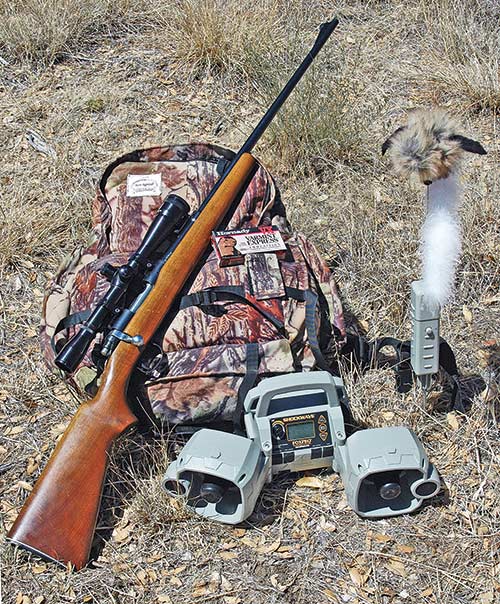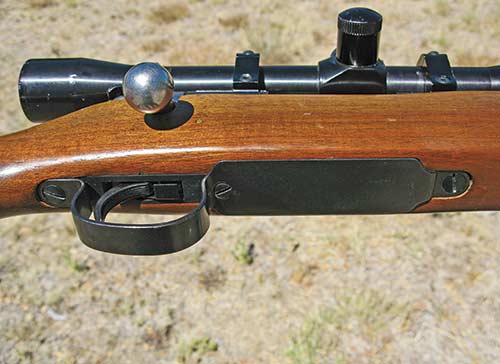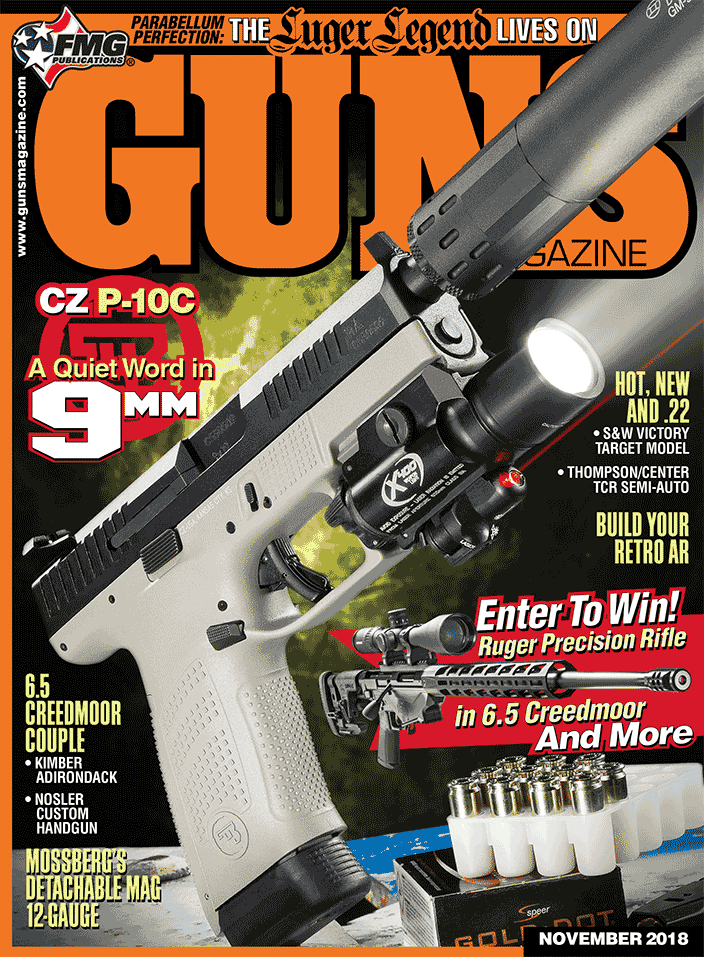“Triple Deuce”
Remington’s 722 In .222 — Woodchuck Wonder Gun
A Classic From the Get-Go
The short action Model 722 was offered in three calibers — .222, .257 Roberts and .300 Savage. It was a plain rifle but streamlined and good looking. The push-feed action was slick and the new trigger unparalleled in commercial sporters. The stock was straight-grained walnut and, oddly enough, supplied without sling swivels. The one-piece triggerguard/floorplate was a stamping. But upgrades were offered. If you wanted a checkered stock, the price was $123, with figured walnut, $136. Add a bit of engraving and you could even buy a “Peerless” Grade for $496 and a “Premier” Grade for $773. That was real money in the 1950s.
One feature — often overlooked in the original Model 722 in .222 — was its barrel. The .257 Roberts and .300 Savage rifles had standard, sporter-weight 24″ barrels. But to squeeze out all the velocity and accuracy the little varmint case had to offer, Mike Walker and his co-designer, Homer Young, endowed the .222 with a button-rifled, medium-weight, 26″ barrel. It was a stroke of genius by two engineers who themselves loved to hunt woodchucks on the farms in upper New York State’s Mohawk Valley.
The Triple Deuce was an overnight sensation. It proved to be a mild speaking, inherently accurate varmint cartridge with an effective range of 300 yards. On the benchrest circuit the Triple Deuce became the cartridge to beat, establishing the first, official, 5-shot group measuring only 0.009″ in 1973. This record stood for 40 years until it was beaten in 2013 by a .30 PPC with a 0.002″ grouping. Either record qualifies as a virtual “one-hole” group.
Practical Advice
For me, the .222 proved to be an easy cartridge to load, even with my basic Herter’s gear. Herter’s Universal Loading Die used a neck-sizing and a bullet-seating bushing to get the job done. The long, 0.30″ neck of the .222 case is a real asset, aligning bullets nicely when seating and holding them friction tight. Plus, the neck is long enough so that bases of 50-55-gr. bullets do not intrude into the powder space.
IMR 4198 was the initial king of all powders for the .222, followed shortly by Hodgdon’s BL-C (Lots 1 and 2). In my Model 722, 20.5 grains of IMR 4198 under Sierra’s 50-gr. spitzer proved fast (3,200 fps), accurate and ever-so-deadly on foxes and chucks. Other loads I have liked with either 50-gr. Sierras or 52-53-gr. match bullets are 21.0 grains of Reloader 7 and 22.0 of Hodgdon H322. Dropping down to a lighter bullet, the .222 really steps out. A recent lot of Winchester 40-gr. Ballistic Silvertips I tested averaged 3,505 fps! At 100 yards, all of those loads were MOA or less.
If you can find one of those early Model 722s with a 26″ barrel, consider it, but only after checking to verify the extractor works properly. A worn out or broken extractor in a 722 or 721 is probably the death knell for the gun because Remington stopped making extractors decades ago. It amounts to forced obsolescence unless you go to the expense of a Sako extractor conversion. Discontinuing the cheap, little, but absolutely vital, part was a stunning disservice to the shooting community and to thousands of rifles bearing the Remington name.
To relieve pressure and wear on my 722 extractor, I greatly reduced the excessive spring tension on the plunger ejector by shortening the spring. So far, so good!
In the history of modern sporting rifles, the Model 722 was a groundbreaking design. In .222 Rem. with a 26″ barrel, it’s a legend.





